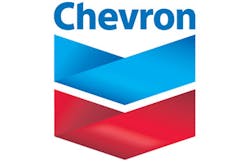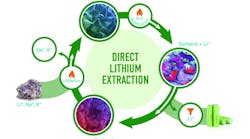Chevron Corp., the second-largest U.S. oil company, has launched a program that is expected to achieve 25 percent growth in its oil and gas output over the next five years. At its annual meeting with analysts, held in New York City, the company announced that as much as 98 percent of its targeted production by 2017 was already in design, construction or production.
As part of its expansion scheme, Chevron stated that it was setting a target of 3.3 million barrels per day (bpd) of oil equivalent by 2017, up on the current level of 2.65 million bpd this year. In addition, the corporation is planning an expansion in Kazakhstan and also intends to launch steam-flooded oil production in the Middle East and to increase production of liquefied natural gas (LNG) from Canada and Australia.
George Kirkland, Chevron's head of exploration and production, said that the company was confident about its 2017 target and expects a growth in production that surpasses the 3.3 million bpd target. In 2013 alone, Chevron is set to drill 440 wells in the Permian basin, in the west part of Texas and New Mexico. According to Kirkland, the assets bought from Chesapeake in September 2012 actually seemed to be more productive than previous estimates. Chevron's chief executive John Watson commented that the company was historically connected with the Permian basin and thanks to the improvements in the shale drilling technology, the region has become an attractive geographical location again. Permian output is predicted to rise to about 200,000 bpd over the next five years, whereas the acreage in the Marcellus shale in the northeastern United States is estimated to produce the equivalent of nearly 100,000 bpd by 2017.
RELATED: Chevron Phillips Chemical studies NAO expansion at Cedar Bayou plant
Elsewhere, Chevron has made investments in Canada's Kitimat LNG export project, with the company hoping to have between 60 and 70 percent of its gas committed to long-term contract before making a final investment decision, Kirkland noted. LNG appears to be high on Chevron's list of priorities, as it is also spending $9 billion on two LNG projects in Western Australia, which is 25 percent of the corporation's entire budget, and further investments are predicted to be made over the first years after the start of the projects.
Speaking about Chevron's current production, Watson noted that the rate of decline for existing fields was down to between 3 and 4 percent, almost 50 percent slower than four years ago.
Meanwhile, the positive outlook for the company is further strengthened by the fact that Chevron has access to cheap feedstock, as its entire ethylene cracking capacity is located in the Middle East and North America, where abundance of feedstock pushes prices down and adds to the beneficial market conditions for the company.


